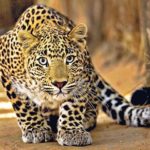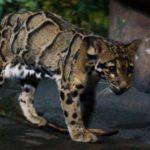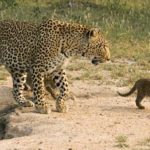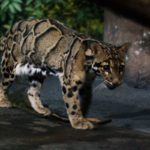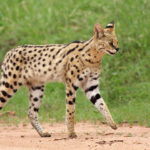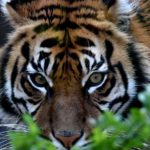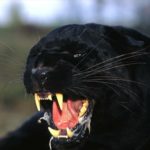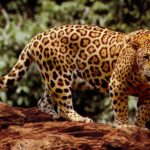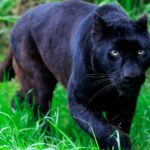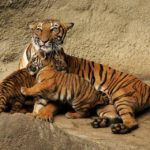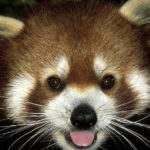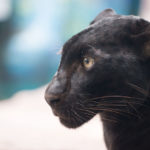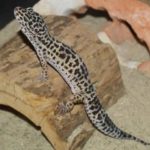Leopards
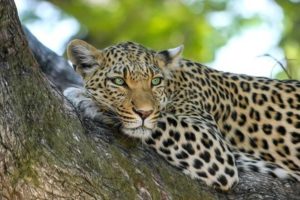 Leopard is one of the big cats belonging to the genus Panthera. His closest relatives are a tiger, a lion and a snow leopard, with whom the leopard has many similarities.
Leopard is one of the big cats belonging to the genus Panthera. His closest relatives are a tiger, a lion and a snow leopard, with whom the leopard has many similarities.
The beauty of a leopard can compete with a tiger, but its size is inferior to it: the length of a leopard’s body is 1-1.8 m, weight 35-70 kg. Otherwise, the leopard is a typical cat with a flexible trunk, a long tail and strong clawed legs. The leopard skin has an unsurpassed spotted color. The main color of the coat is yellow or red with a transition to white on the underside of the body.
But among leopards often there are animals with an increased content of pigment in wool, in this case the hide of the beast acquires a black or black-brown color on which the spots hardly show. Such leopards are usually called panthers. The wool of this beast is short, but dense and is appreciated as a magnificent finishing material.
The area of the leopard is very extensive. This cat is found everywhere in the open spaces of Africa and Asia, reaching the Caucasus mountains and the Amur taiga in the north. This animal very easily adapts to different habitats and inhabits different landscapes: you can meet a leopard in savannas, semi-deserts, mountains and dense forests.
Like any cat, a leopard leads a solitary lifestyle. Usually he quietly moves on soft paws, spotted skin perfectly masks it among leaves and grass. As a rule, the leopard waits for the day’s heat in a secluded place and goes hunting with the onset of twilight. But in the presence of abundant booty, he easily changes his regime and hunts during the day.
The leopard feed mainly on ungulates – small antelopes, gazelles, deer, wild pigs, roe deer. In some areas, leopards often hunt for monkeys. On occasion, they can eat smaller animals – birds, rodents and even reptiles. Leopards scorn carrion and eat it only in case of extreme hunger. Leopards trap their prey in ambush and stealthily approaching it for a short distance, after which they overtake it with a huge leap and strangle it by the throat.
In general, the leopard is better than all other felines climbing trees and killed prey constantly drags on branches, making it inaccessible to other predators. But the leopard himself will not miss the opportunity to take away the prey from a weaker hunter, for example, a cheetah.
Leopards do not have a specific breeding season, except for animals that live in the north (in Amur leopards, the mating season occurs in winter). Pregnancy lasts 3 months, after which the female brings 1-3 young. For offspring, she chooses a den in a cave or thick undergrowth. Leopard kittens are born blind, but grow quickly and soon begin to emerge from the lair. Young animals keep with the mother up to 1-1,5 years, at this time the female brings them the wounded animals and teaches the art of hunting.
An adult healthy leopard, because of its secrecy, strength and dexterity, has practically no enemies. The main competitors of leopards are lions and hyenas in Africa, tigers and wolves in Asia. These animals can take away the prey of leopards and attack young animals, but since leopards usually hide prey on trees, it happens rarely. Sometimes leopards can be injured on the hunt from warthogs or buffaloes. More often this happens to young inexperienced animals. Sick and old animals can approach human habitation and hunt for more defenseless prey – goats, sheep, dogs, poultry. In extremely rare cases, a leopard can become an ogre.
But usually people just represent for leopards the biggest threat. From time immemorial, these animals have been hunting. Although the short fur of a leopard is not suitable for making warm clothes, but because of its beauty it is used for decoration and simply as decoration of a home. For all the peoples, hunting for leopards was a hunt for the nobility and prestige. The beast itself became a symbol of power and is often found as an element of heraldry. In captivity, leopards live well and can breed. The number of some subspecies of the leopard has reached a critical level and needs special measures for breeding in captivity.


